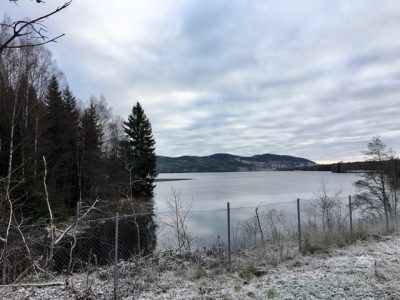Oslo’s main source of water, the lake known as Maridalsvannet, is covered with ice right now, masking problems below its surface. Water levels are alarmingly low, also in other lakes surrounding the Norwegian capital, and residents are being urged to cut consumption.

“It’s not critical quite yet,” Simen Jørgensen of the city’s water and sewage department told Norwegian Broadcasting (NRK), “but if we don’t get more precipitation (in the form of snow or rain), it can become so. We’re following the situation closely.”
There was unusually little precipitation last autumn and even less in the first month of 2022. Two severe storms in the past few weeks brought mostly just strong winds in the Oslo area, and there’s only been one significant snowfall. The hills and forests known as marka that surround the city are full of lakes and creeks feeding needed water to the capital. Skiers are disappointed and now seriously local officials are seriously worried.
Forecasts called for some snow all over Southern Norway this week and some was already falling on Tuesday, with the Oslo area also due for several centimeters. Much more is needed, though. There’s unusually little snow in the mountains, too, which has already driven up electricity prices and means there won’t be nearly as much snowmelt this spring to feed rivers flowing into urban areas at lower elevations.
“It’s more or less bare of snow around here,” reindeer herder Jørn Slettom in the mountains around Vågå, told NRK. “You have to get up to 1,600-meter elevation to find any.” Not even the popular skiing area around Sjusjøen, close to Lillehammer, has much snow. “It’s been an irritating winter for all of us who love to go skiing,” said Heidi Bache Stranden, a hydrologist at state waterways and energy agency NVE. It has never measured so little snow at Sjusjøen, less than 40 centimeters late last week. Beitostølen, another popular ski center in the mountains of Valdres, could offer even less.
There’s lots more on the western side of the mountains, swept in with storms off the North Sea, but southeastern Norway is dry and that’s what’s causing problems in Oslo. They’ve been made worse by the city’s decision to drain some key lakes farther north of Maridalsvannet last year to repair their dams. There hasn’t been enough precipitation to refill them.
“Our reservoirs that are tied to Maridalsvannet are now at a relatively low level,” wrote Anna Maria Aursund in a press release heading into the weekend. She leads the the city’s water and sewage department (Vann- og avløpsetaten) in Oslo and felt compelled to send out a water warning to all residents.
“In order to prevent a water shortage,” Aursund continued, “we find it necessary to ask Oslo’s residents to be careful with their water use.”
Actual water levels currently are at 70 percent of normal, her colleague Jørgensen told newspaper Aftenposten on Saturday. That’s a level, he said, “that means we now need to encourage water conservation.”
The city is thus urging residents to turn off the tap while brushing teeth, to take shorter showers, to use the “eco” programs on dishwashers and washing machines and only run full loads. Water conservation measures common in many other areas of the world are now being urged in an area of Norway where water has mostly been plentiful.
There have been some recent droughts, though, and researchers are regularly sending out climate change warnings. The city of Oslo is finally underway on a huge, expensive and long overdue project to bring new sources of water from the Holsfjord west of the capital, and is also securing more immediate supplies from neighbouring Bærum and Nedre Romerike. Restrictions on water use are also an option.
newsinenglish.no/Nina Berglund

